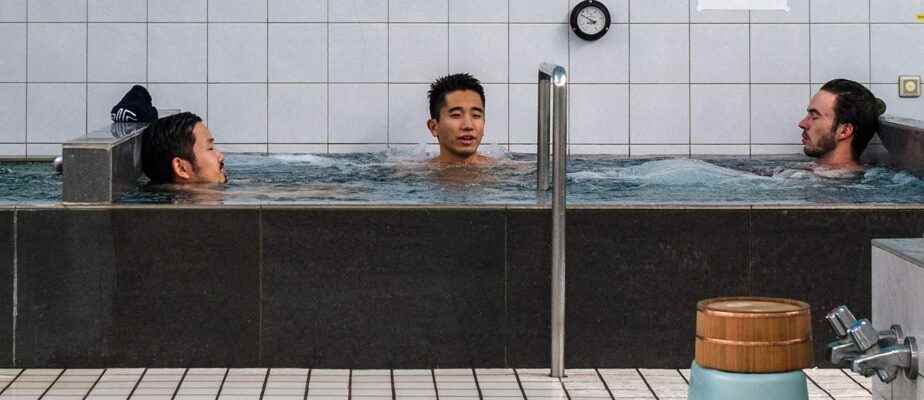(Tokyo) Once ubiquitous in Japan, public baths, or sento, have been on the decline for years in the archipelago. But some of them are innovating to revitalize themselves and rejuvenate their clientele.
Posted at 2:15 p.m.
Japan now has only around 1,800 sento, ten times less than at the end of the 1960s. Men and women separated, we soak ourselves naked in these baths with a generally outdated atmosphere, decorated with frescoes of traditional motifs such as the unmissable Mount Fuji.
Sento closures are now reaching a critical number due to insufficient means to renovate them, soaring costs and the difficulty of their owners to find successors.
Their disappearance risks eroding close social ties. Because these are “neighborhood places where everyone meets […]including many elderly people who live alone,” said Sam Holden, a 32-year-old American who has lived in Tokyo for almost ten years.
Sento et Quartier, the association of which Mr. Holden is one of the co-directors, won a grant of approximately $200,000 from the World Monuments Fund with the assistance of the American Express group to save Inari-yu, a sento of Tokyo dating back to 1930, and transforming a small adjacent century-old building into a community living space.
“My colleagues and I had a sense of urgency to want to preserve some of these historic buildings before they were turned into apartment complexes and other things,” Holden told AFP.
Craft beer and vinyls

PHOTO RICHARD A. BROOKS, AGENCE FRANCE-PRESSE
In the small, raw concrete reception room of Tokyo’s Koganeyu sento, young customers lined up on benches sipping craft draft beers to the sound of retro Japanese pop played on vinyl records.
Sento prices are low (500 yen in Tokyo, or less than $5) because they are set by the municipal authorities who subsidize them.
But unlike onsen, the natural hot springs in Japan, sento generally heat their baths with gas, which makes them vulnerable to the current spike in energy prices.
According to Shunji Tsuchimoto, 60, who runs Inari-yu with his wife, his establishment’s energy bill has jumped 50% this year compared to last year.
Another Tokyo sento, Koganeyu, reopened in 2020 after a complete renovation to become a trendy place.
In its small, raw concrete reception room, young customers lined up on benches sipping craft draft beers to the sound of retro Japanese pop played on vinyl records.
“The image I have of sento is a place where grandfathers and grandmas gather,” Kohei Ueda, a 25-year-old IT worker who came to Koganeyu with a friend, told AFP.
“But in a sento like this, more fashionable and modern […]I feel more at ease there,” he adds.
“Digital Detox”

PHOTO PHILIP FONG, FRANCE-PRESSE AGENCY
Japan now has only around 1,800 sento, ten times less than at the end of the 1960s. Men and women separated, we soak ourselves naked in these baths with a generally outdated atmosphere, decorated with frescoes of traditional motifs such as the unmissable Mount Fuji.
To increase its attendance, Kom-pal, another Tokyo-based sento, does not bet on a style “ hipster but rather on technology.
When he took over the management of this establishment run by his family since the 1950s, Fumitaka Kadoya, 36, began to analyze in detail the attendance data of the place according to days and hours, as well as to promote its sento on social networks and to measure its impact.
This has allowed this former technician from the Japanese group Olympus to make targeted business decisions, such as recruiting female staff to encourage more women to frequent his sento or to open on Sunday mornings.
“Sento have always been part of Japanese culture,” Kadoya reminds AFP. And nowadays, leaving all your stuff in a locker to relax in a hot bath can be a kind of “digital detox”, he thinks. “This is exactly what young people today need.”
Yasuko Okuno, a 30-something who blogs for the Tokyo Sento Association, sees these bathhouses as a great place to unwind after work.
“When I went to a sento for the first time in a long time, it was like a weight suddenly disappeared,” she recalls.
“There was a big bath, and the regulars greeted me kindly and we chatted.” Over time, “it started to look like a second home to me.”
